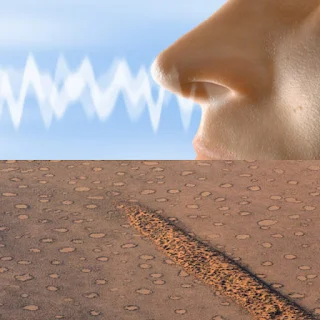A new study claims that gases in the air resulting from human exhalation are leading to increased global warming.
Scientists say the methane and nitrous oxide in the air we exhale make up up to 0.1% of the UK's greenhouse gas emissions.
The new study was led by Dr Nicholas Cowan, an atmospheric physicist at the UK Center for Environment and Hydrology in Edinburgh.
“Human exhaled breath can contain small, high concentrations of methane (CH4) and nitrous oxide (N2O), both of which contribute to global warming,” Cowan and his colleagues say. We would urge caution in assuming that emissions from humans are negligible.”
Humans breathe in oxygen and exhale carbon dioxide. As for plants, it is the opposite; Plants use carbon dioxide to produce oxygen as a byproduct (the process known as photosynthesis).
Plants absorb essentially all the carbon dioxide emitted in human breathing, so the contribution of anthropogenic carbon dioxide to climate change is essentially zero, Dr. Cowan said.
The same cannot be said for methane and nitrous oxide, as plants do not use these gases in photosynthesis.
The scientists studied human breath methane and nitrous oxide emissions from 104 UK adult volunteers.
Participants were asked to take a deep breath, hold it for five seconds, and then exhale into a resealable plastic bag. A total of 328 breath samples were collected, and each participant recorded details such as age, gender and food preferences.
After analyzing the samples, nitrous oxide was found to be emitted by every participant, but methane was found in the breaths of only 31% of participants.
Scientists have been unable to find any link between gases in the breath and diet, although meat-eaters are known to be fueling the climate crisis in other ways.
Experts stress that their study only looked at greenhouse gases via breathing, and therefore does not provide a comprehensive estimate of an individual's emissions footprint.
It is noteworthy that methane gas is produced inside the human body by microorganisms called methanogens, which colonize our digestive system. Methane crosses into the blood and travels to the lungs, where it can be exhaled.
Meanwhile, bacteria in the intestines and oral cavity convert nitrates in food and water into nitrous oxide, which also escapes in people's breath.
The study was published in the journal PLOS One.
Scientists reach a preliminary explanation for the phenomenon of “fairy circles” The mysterious
The strange circles called “fairy circles” fascinated In the arid lands of Namibia and other parts of the world, scientists have been puzzled for years.
These circles are a roughly hexagonal pattern in bare soil surrounded by plants, and theories about their appearance range from spatial self-organization caused by size-dependent responses of aquatic plants to pre-existing patterns of termite nests.
Professor Ehud Meron from Ben-Gurion University of the Negev studied Namibian fairy circles as a case study to understand how ecosystems respond to water stress.
The research team believes that all theories to date have ignored the coupling of two powerful mechanisms fundamental to understanding ecosystem response: phenotypic plasticity at the single-plant level, and spatial self-organization in vegetation patterns at the plant group level.
Phenotypic plasticity is the ability of a plant to change its traits in response to environmental stresses.
Professor Miron, together with his postdoctoral colleagues Jamie Bennett, Bidish Bera, Michel Ferret, and Isaac and Stefan Gjetzen, proposes a new model that captures both spatial patterning by size-dependent responses of aquatic plants, and phenotypic changes that involve deep root growth to reach To the moist soil layer.
The new model proposed by the scientists shows that the coupling of these two mechanisms (spatial patterning and phenotypic changes) can lead to many additional pathways of ecosystem response to water stress, leading to different multi-scale patterns, all of which are significantly more resilient to water scarcity than others. involving a single phenotype.
By comparing model predictions with experimental observations, the study authors noted in a paper published last week in the journal Proceedings of the National Academy of Sciences (PNAS), that regular spatial patterns of vegetation are a common sight in drylands. Their formation is a response, at the plant community level, to water stress that increases water availability for a few plants at the expense of partial death of others.
“Identifying these alternative pathways is essential to transforming fragile ecosystems that are on the verge of collapse into resilient pathways,” Miron explains. He concluded, “This study highlights the importance of considering more elements of ecosystem complexity when addressing how to prevent ecosystems from becoming dysfunctional states as warmer and drier climates develop.”
Their findings were published in the journal Proceedings of the National Academy of Sciences.




Nice
ReplyDelete